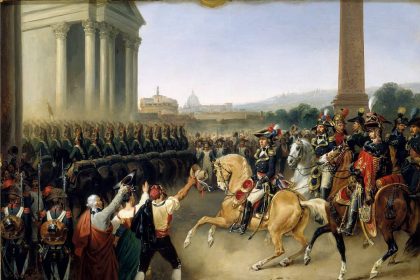Because of Napoleon Bonaparte‘s widespread fame, many people still know that one of his favorite horses was called Marengo. This gray and white Arabian stallion would have been named after the June 1800 Battle of Marengo, in which Napoleon barely beat an Austrian army in Italy. However, very little information is available regarding the horse Marengo, and some historians even question the horse’s existence.
There is, however, a skeleton that has been alleged to be the famed Marengo horse on exhibit at London’s National Army Museum. But can we really be so sure about this? One thing that can be said with certainty is that Napoleon rode at least 150 horses in his lifetime. His secretary, Agathon Jean-François Fain, remarked that it was an occasional spectacle to see Napoleon ride:
He rode recklessly and dangerously. He hunched forward in the saddle, holding the reins loose in his right hand while leaving his left arm free and moving his whole body to the horse’s rhythm.
Agathon Jean-François Fain
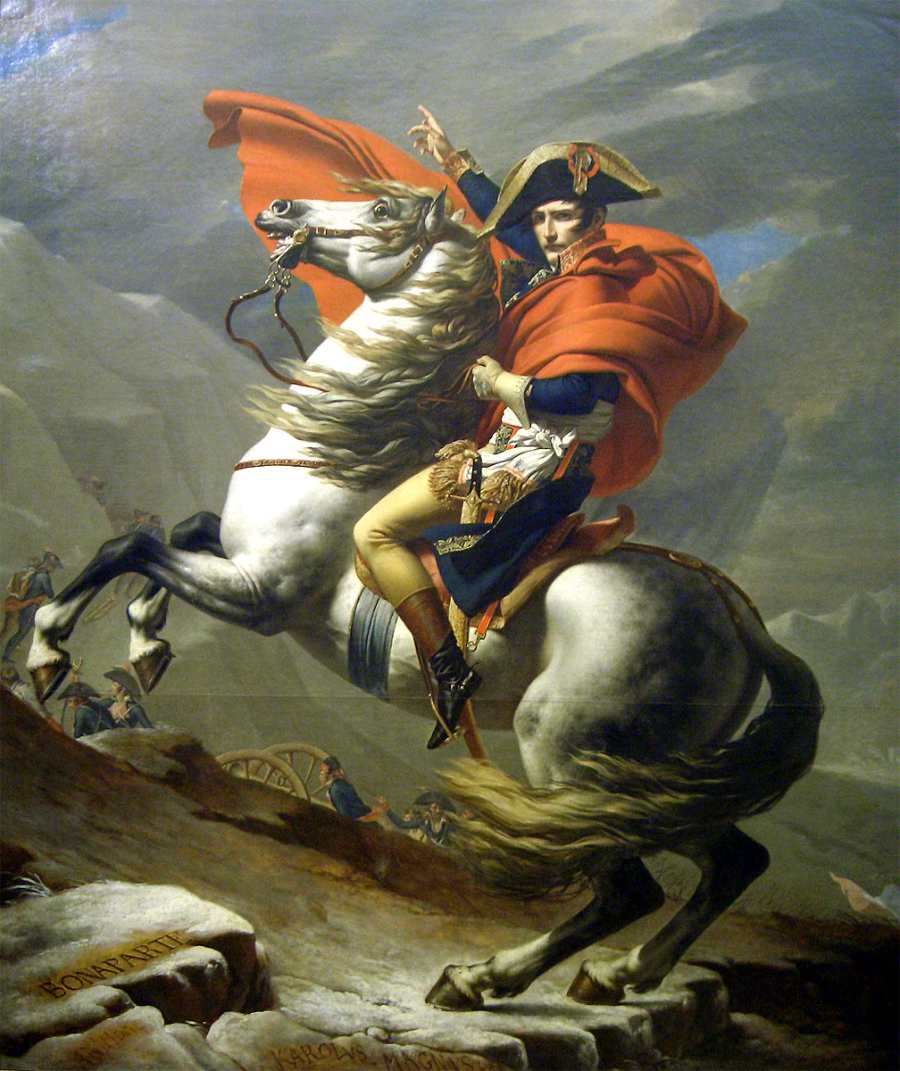
The list of Napoleon’s horse companions is, at best, incomplete. Strangely, the name of the illustrious Marengo does not exist in the records of the imperial stables or any other French archives, despite his widespread fame. In her exhaustive study of “Napoleon’s fabled horse,” Australian author Jill Hamilton suggests that “Ali,” not “Marengo,” was the official name of the horse.
Napoleon had seized this gray-white horse in Egypt in 1799 and brought it to France. Actually, Napoleon did not ride the horse during the Battle of Marengo, despite the name. The horse, however, was maintained at the stable so that he could use it whenever he wanted.
This potential “Marengo” did not take part in the disastrous 1812 Russian campaign as well. The stallion was stabled in Normandy at the time. The horse was restored to the Tuileries stables in 1815, after Napoleon returned to Paris from captivity on Elba.
Marengo was then supposedly present during the Battle of Waterloo, which occurred not long after. But one can rule out the possibility of Napoleon ever having ridden a horse named Marengo in the war. Napoleon’s only horse that day was a mare named Desirée, after his brief fiancée, Desirée Clary, who went on to become Queen of Sweden and Norway.
Napoleon’s Horse: Marengo
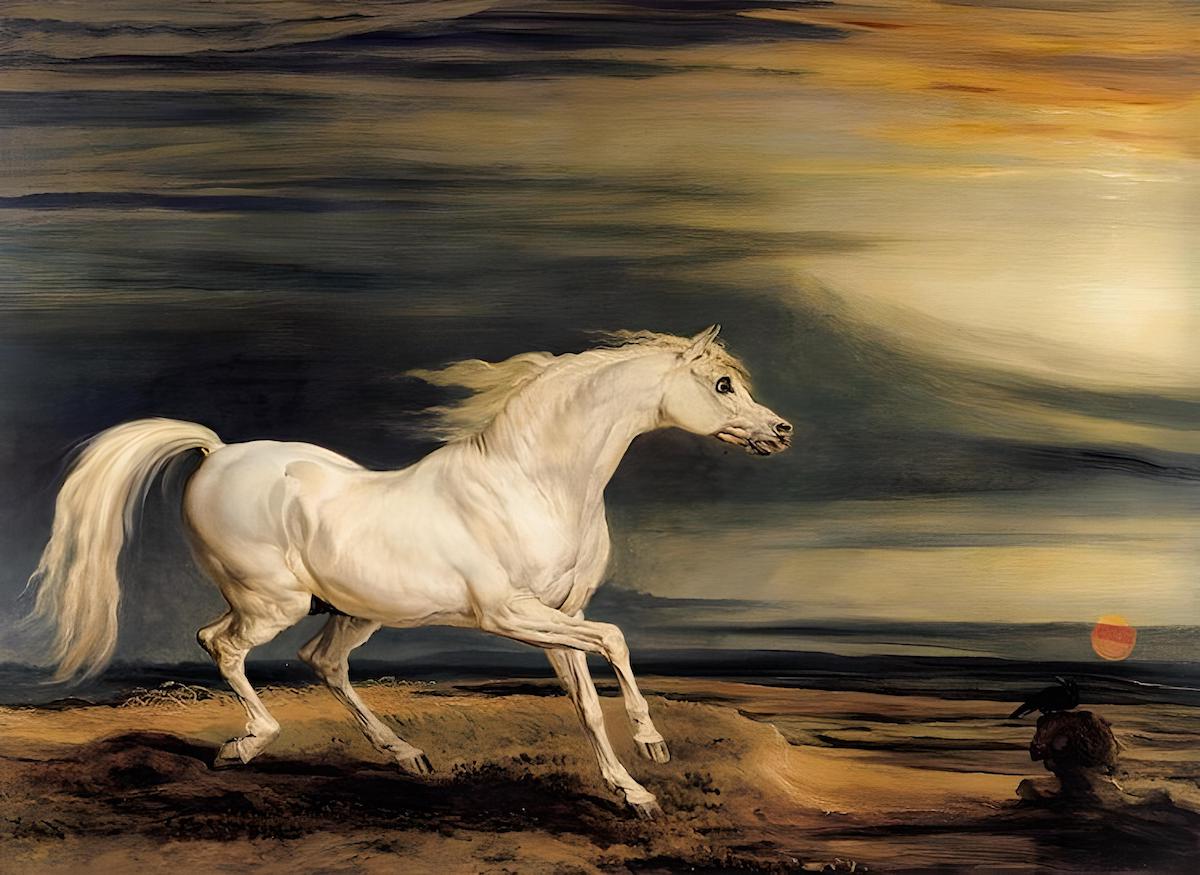
Napoleon was exiled to Saint Helena after his defeat at Waterloo and remained there until his death. Another horse in the imperial stables was being cared for by a British officer. From the equipment and the branded letter “N” on the horse’s skin, he surmised that it belonged to the imperial riding stable. Soon after, a Grenadier Guards lieutenant colonel purchased the horse.
This horse, falsely alleged to be the imperial “Marengo,” proved to be a popular draw in England. Once the French emperor Napoleon was finally vanquished a genuine “Napoleomania” swept the country. Thanks to Napoleon’s horse Marengo, the once-feared general became a beloved figure in the eyes of the people. Due in large part to the Napoleonic hysteria of the 19th century, many modern people automatically think of Marengo when hearing of the horse of the French emperor.
In 1824, the artist James Ward painted a big canvas showing Marengo lounging on the sand. The horse seems to be pining for its former master, who was currently living in exile far, far away, as it stares out into the distance towards the sinking sun.
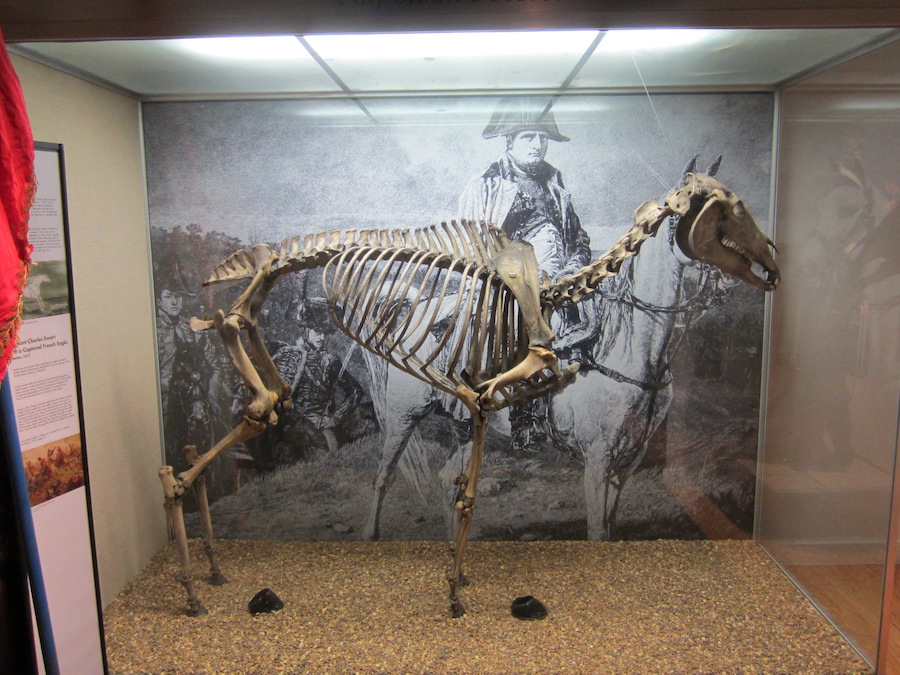
A second attempt to utilize Napoleon’s horse Marengo as a breeding stallion ultimately failed in the years that followed. Napoleon’s horse Marengo lived to the ripe old age of 38, passing away in 1832. The goal was to get the horse ready for mounting. But that never materialized.
Marengo’s hide was lost. Only the bones were left. The Army Museum in London is where modern audiences may marvel at the skeleton of Marengo. However, the skeleton is lacking two hooves. The officers of the Grenadier Guards were formerly presented with Marengo’s one hoof as a snuffbox. The horse’s second hoof has perished, just like the skin.
Marengo’s skeleton was cleaned up and repaired in 2017. Army Museum staff felt this was necessary because the animal had been displayed in an unprofessional manner since the 19th century.
Another of Napoleon’s Horse: Vizir
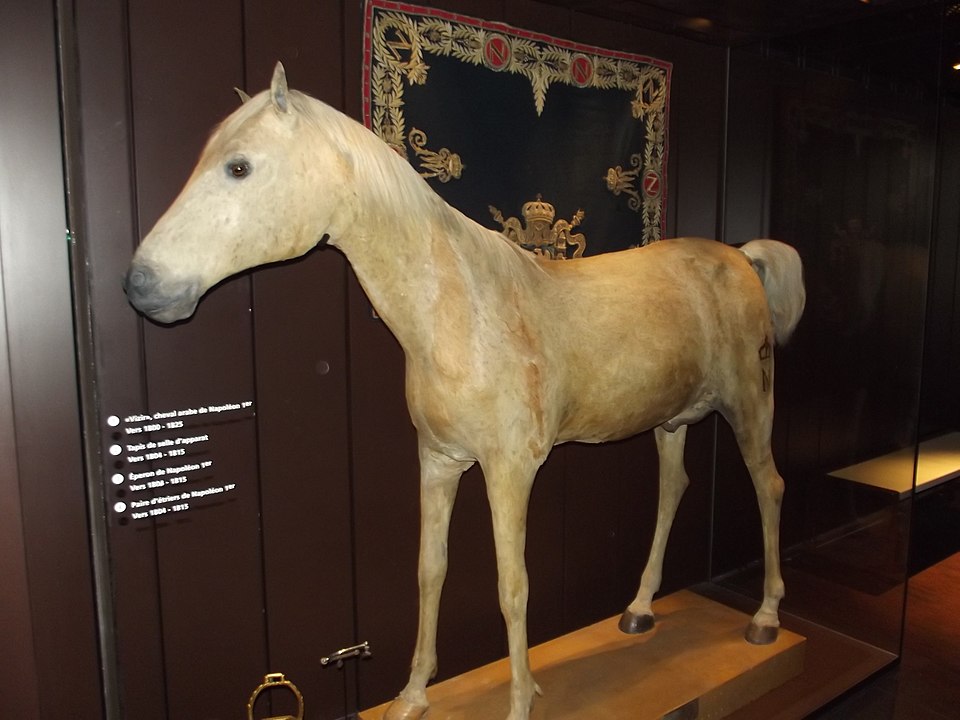
Vizir, another of Napoleon’s horses, has been preserved in a stuffed state for posterity. It was in 1805 when the Sultan of Ottoman (Turkey), Selim III, presented the French emperor with this white Arabian thoroughbred as a gift. For a period of 10 years, Napoleon had the animal at his side; he rode it in Prussia at Jena (1806) and Eylau (1807).
After Napoleon’s death, Vizir was sent to St. Helena and groomed there. The horse is currently on display in Paris’ The Army Museum. On its left thigh, you can make out a crowned “N.” But there are concerns about this horse as well. Few people are convinced that this is the same horse that Napoleon rode in those famous wars. The French Army Museum is fairly confident that this horse is Vizir; nonetheless, a notice in the exhibit reads “Si c’est bien lui” (If it is him).
List of horses of Napoleon
The list of horses of Napoleon in alphabetical order:
- Aboukir ;
- Aly, iron gray, 1812 ;
- Arabella ;
- Artaxercés ;
- Austerlitz ;
- Babylonien ;
- Baladière, mouse gray, 1811 ;
- Belle ;
- Bouffon ;
- Calvados ;
- Cantal, mottled gray ;
- César, dirty gray, 1808 ;
- Cid ;
- Cléopâtre, ash gray, 1806 ;
- Coceyre ;
- Conquérant ;
- Cordoue ;
- Cyrus ;
- Diomède, pale grey, 1808 ;
- Distingué ;
- Duc ;
- Edile ;
- Effendi ;
- Emule ;
- Endurant ;
- Estime ;
- Étrangère ;
- Euphrate ;
- Extrême ;
- Famillier ;
- Folâtre ;
- Frère ;
- Georgien ;
- Gesner ;
- Gracieux ;
- Gracieux, dapple-gray, 1815 ;
- Grisou, spotted-gray, 1814;
- Guza ;
- Hahim ;
- Harbet ;
- Hector ;
- Helavert ;
- Héricle ;
- Iéna ;
- Jaspé, vinous gray, 1812 ;
- Judith ;
- Louvette ;
- Lydienne ;
- Lyre ;
- Major ;
- Marengo ;
- Naïade ;
- Nankin ;
- Naturaliste ;
- Naufragé ;
- Nausicaa ;
- Navigateur ;
- Navire ;
- Nickel, a thoroughbred Arabian with a metallic gray coat, donated by the Tsar of Russia in 1805.
- Ninon ;
- Ramier, mottled gray, 1807 ;
- Robuste, starling gray, 1815 ;
- Roitelet ;
- Russe ;
- Sagonte ;
- Sahara ;
- Sélim, dirty gray, 1812 ;
- Styrie ;
- Suez, ash gray, 1815 ;
- Sultan ;
- Tauris ;
- Timide ;
- Triomphant ;
- Vizir, almost white peach blossom, with all hairs, slightly trout chestnut;
- Wagram, gray.
Bibliography:
- The Myth of Napoleon’s Horse Jill, Duchess of Hamilton.
- Marengo’s makeover | National Army Museum. (n.d.). Marengo’s Makeover | National Army Museum. Retrieved January 4, 2023, from https://www.nam.ac.uk/explore/marengos-makeover
- Napoleon’s last horse given makeover by taxidermists. (2016, July 3). Napoleon Bonaparte’s Last Horse to Be Restored for Second Time – ABC News. Retrieved January 4, 2023, from: https://www.abc.net.au/news/2016-07-03/napoleons-last-horse-to-strut-his-stuff-after-makeover/7565536




